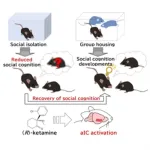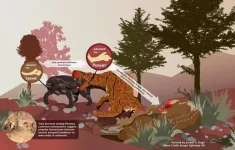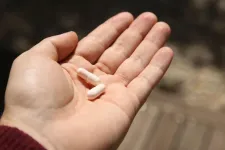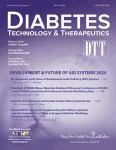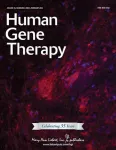A novel deep learning modeling approach guided by mesoscience—MGDL
2024-02-23
(Press-News.org)
Deep learning modeling that incorporates physical knowledge is currently a hot topic, and a number of excellent techniques have emerged. The most well-known one is the physics-informed neural networks (PINNs). PINN integrates the residuals of the system’s governing partial differential equations (PDEs) and the initial value/boundary conditions into the loss function, thus the resulting model satisfies the constraints of the physical laws represented by the PDEs. However, PINN cannot work if equations among the key physical quantities of the system have not been established. To model such systems, novel methods must be developed.
MGDL (mesoscience-guided deep learning, a deep learning modeling approach guided by mesoscience, was proposed by Li Guo et al. from Institute of Process Engineering (IPE), Chinese of Academy Sciences (CAS). Mesoscience is a methodology for tackling multilevel complexities. It focuses on the study of mesoscale problems at different levels and correlates the macroscale behavior and intrinsic mechanisms of a system by means of the principle of compromise in competition (CIC) between dominant mechanisms.
When establishing sample dataset based on the same system evolution data, different from the operation of conventional deep learning method, MGDL introduces the treatment of the dominant mechanisms of complex system and interactions between them according to the CIC principle of mesoscience. Mesoscience constraints are then integrated into the loss function to guide the deep learning training. Two methods are proposed to add mesoscience constraints—as a loss regularization term or the learning rate correction. The physical interpretability of the model-training process is improved by MGDL because guidance and constraints based on physical principles are provided. MGDL was evaluated using a bubbling fluidized bed modeling case and compared with traditional techniques. With a much smaller training dataset, the results indicate that mesoscience-constraint-based model training has distinct advantages in terms of convergence stability and prediction accuracy, and it can be widely applied to various neural network configurations.
MGDL, proposed by researchers from IPE, CAS, is a novel strategy and method for utilizing the physical background information during deep learning model training. With the increasingly profound study and widespread application of mesoscience, MGDL is expected to be extensively applied to the modeling of complex systems.
The paper “A Case Study Applying Mesoscience to Deep Learning” is authored by Li Guo, Fanyong Meng, Pengfei Qin, Zhaojie Xia, Qi Chang, Jianhua Chen, and Jinghai Li. Full text of the open access paper: https://doi.org/10.1016/j.eng.2024.01.007. For more information about the Engineering, follow us on Twitter (https://twitter.com/EngineeringJrnl) & like us on Facebook (https://www.facebook.com/EngineeringJrnl).
About Engineering:
Engineering (ISSN: 2095-8099 IF:12.8) is an international open-access journal that was launched by the Chinese Academy of Engineering (CAE) in 2015. Its aims are to provide a high-level platform where cutting-edge advancements in engineering R&D, current major research outputs, and key achievements can be disseminated and shared; to report progress in engineering science, discuss hot topics, areas of interest, challenges, and prospects in engineering development, and consider human and environmental well-being and ethics in engineering; to encourage engineering breakthroughs and innovations that are of profound economic and social importance, enabling them to reach advanced international standards and to become a new productive force, and thereby changing the world, benefiting humanity, and creating a new future.
END
[Attachments] See images for this press release:
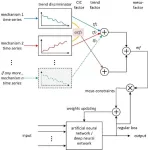
ELSE PRESS RELEASES FROM THIS DATE:
2024-02-23
Osaka, Japan – Well-being is important for everyone, especially when we feel lonely or isolated. Depression is a serious challenge for many people and finding an effective solution is key.
In a recent study published in Molecular Psychiatry, researchers from Osaka University used a mouse model of depression to reveal that one form of ketamine (a common anesthetic) in low doses can improve social impairments by restoring functioning in a specific brain region called the anterior insular cortex.
Ketamine is often used at low doses to treat depression, but its actions in the brain remain relatively unclear. Generally, ketamine refers to a mix of two different forms of ketamine: ...
2024-02-23
The evolutionary success of the first large predators on land was driven by their need to improve as killers, researchers at the University of Bristol and the Open University suggest.
The forerunners of mammals ruled the Earth for about 60 million years, long before the origin of the first dinosaurs. They diversified as the top predators on land between 315–251 million years ago.
Researchers studied the jaw anatomy and body size of carnivorous synapsids, using these traits to reconstruct the likely feeding habits of these ancient predators and chart their ecological ...
2024-02-23
AI holds the potential to revolutionize healthcare, but it also brings with it a significant challenge: bias. For instance, a dermatologist might use an AI-driven system to help identify suspicious moles. But what if the machine learning model was trained primarily on image data from lighter skin tones, and misses a common form of skin cancer on a darker-skinned patient?
This is a real-world problem. In 2021, researchers found that free image databases that could be used to train AI systems to diagnose skin cancer contain very few images ...
2024-02-23
Increased use of Paxlovid, the antiviral drug used to treat COVID-19, could prevent hundreds of thousands of hospitalizations and save tens of billions of dollars a year, according to a new epidemiological model published by researchers at The University of Texas at Austin. In fact, epidemiologists found that treating even 20% of symptomatic cases would save lives and improve public health.
A 2023 National Institutes of Health study found that only about 15% of high-risk patients take Paxlovid when infected with COVID-19. Using a multiscale mathematical model based on ...
2024-02-23
From smart virtual assistants and self-driving cars to digital health and fraud prevention systems, AI technology is transforming almost every aspect of our daily lives—and education is no different. For all its promise, the rise of AI, like any new technology, raises some pressing ethical and equity questions.
How can we ensure that such a powerful tool can be accessed by all students regardless of background?
Inspired by this call to action, USC researchers have created a low-cost, accessible learning kit to help college and high school students build their own “robot friend.” Students can personalize the robot’s ...
2024-02-23
A special 13-article supplement to the peer-reviewed journal Diabetes Technology & Therapeutics (DTT) examines the “Development and Future of Automated Insulin Delivery (AID) Systems. Click here to read the supplement now.
Included in the supplement is the article titled “A Peek Under the Hood: Explaining the MiniMed™ 780G Algorithm with Meal Detection™ Technology", by Benyamin Grosman, PhD and his Medtronic algorithm team with co-authors Ohad Cohen, MD, and Robert Vigersky, MD, Chief Medical Officer at Medtronic. James Thrasher, MD “Early ...
2024-02-23
RENO, Nev. – A multi-agency study, spearheaded by researchers from the University of Nevada, Reno’s College of Agriculture, Biotechnology & Natural Resources and the U.S. Department of Agriculture, underscores the impacts of strategic cattle grazing, particularly on restoring the declining population of the greater sage-grouse bird, a keystone species in the Great Basin region.
Amidst ongoing decline, the U.S. Fish and Wildlife Service acted by listing the sage-grouse for protection under the Endangered Species Act in 2011. This move prompted the Bureau of Land Management to develop a federal conservation plan for the species ...
2024-02-23
Recent clinical trials utilizing high doses of adeno-associated virus (AAV) vectors have highlighted a new challenge to AAV gene transfer – activation of the complement system. A new article in the peer-reviewed journal Human Gene Therapy describes how a convergence of AAV-specific, environmental, and patient-specific factors shaping complement responses likely contribute to differential outcomes seen in clinical trials. Click here to read the article now.
Complement responses may contribute to priming of the adaptive immune system or serious adverse events ...
2024-02-23
By Ann Kellett, Texas A&M University School of Public Health
A new study from the Texas A&M University School of Public Health suggests that city dwellers who have more exposure to urban green spaces require fewer mental health services.
The study, published in the International Journal of Environmental Research and Public Health, was conducted by Jay Maddock, Ph.D., Regents Professor of environmental and occupational health at Texas A&M, and colleagues from the Center ...
2024-02-23
University of Queensland researchers have identified an opportunity to reduce infections in people living with cystic fibrosis.
Professor Matt Sweet, Dr Kaustav Das Gupta and Dr James Curson from UQ’s Institute for Molecular Bioscience have discovered a fault in the bacteria-killing function of immune cells in people with CF and a potential way to get around it.
CF is a chronic disease in which defects in the CFTR (cystic fibrosis transmembrane conductance regulator) channel cause a build-up of mucus in the lungs, airways and digestive system, leading to ...
LAST 30 PRESS RELEASES:
[Press-News.org] A novel deep learning modeling approach guided by mesoscience—MGDL

